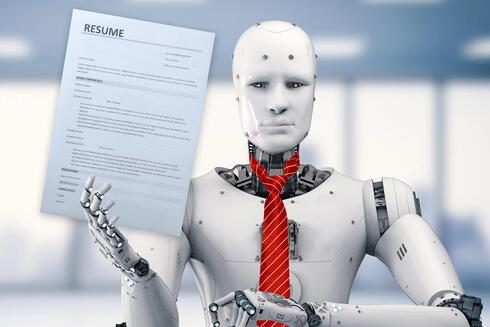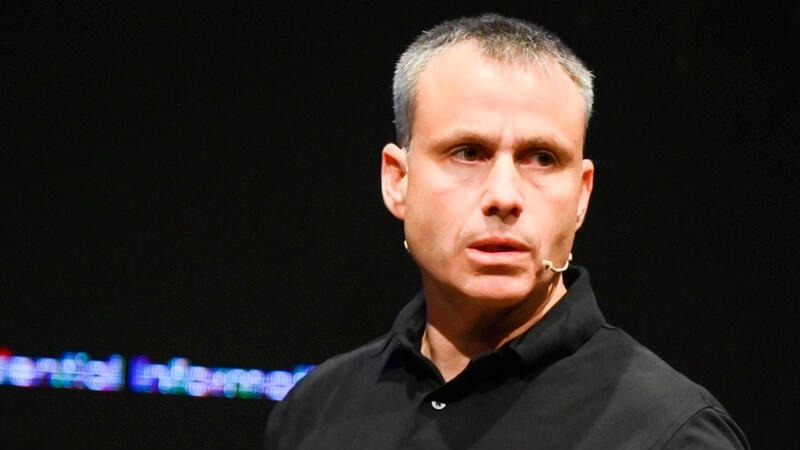
When AI decides who to hire
As AI tools like ChatGPT have been integrated in recruitment processes, concerns have risen over biases in decision-making and privacy of personal data
ChatGPT has passed programming tests at Google and Amazon, has been hired as a communications consultant, and has helped candidates in all stages of the job search from writing resumes, LinkedIn profiles, preparing for job interviews and writing tests. Employers are also using AI to find, screen, and place candidates, from writing job ads, to filtering resumes, to analyzing job interviews. AI tools are increasingly being used in the job search and recruitment processes, and, while they streamline them, human intuition and judgment are also being removed from the equation, for better or for worse.
The recruitment machine
Recruitment has been changing with the integration of new technologies and the use of AI tools, long before the launch of ChatGPT. Today, artificial intelligence software is already being used to screen resumes, sort candidates based on past experience, and even perform and analyze interviews with candidates. However, technological advancement has revolutionized the profession itself. According to a survey conducted by HRD Israel among 300 organizations, 70% of recruiters have already used ChatGPT for work purposes, mainly for content creation, such as writing job ads and posts for social networks.
"There is no doubt that the real revolution in the recruitment and HR world is happening right now. Tools like ChatGPT or BARD enable a significant leap forward," says Viki Groner, a consultant and lecturer in recruitment and employer branding at HRD. "Firstly, they can serve as a source of knowledge. While in the past, we relied on organizational encyclopedias that defined certain roles, now we can get a job description with the click of a button. The description can be accessible and tailored. Additionally, ChatGPT can create content for us, it can write articles for us, draft job descriptions, and even suggest job requirements. It can build functions in Excel, recommend behavioral questions for interviews, and even generate a mechanism for candidate screening."
AI systems are able to analyze information quickly and accurately so that organizations can focus on the most suitable candidates. In addition, artificial intelligence tools help organizations in employer branding, manage recruitment systems and candidate experience.
"As a recruiter at AppsFlyer, there isn't a day that goes by that I don't use artificial intelligence for my work needs. In terms of my daily work, ChatGPT is a complete game changer,” says Tal Bar Menashe, Talent Acquisition Specialist at AppsFlyer.
“You can use prompts to write as an experienced recruiter, as a junior product manager or as a senior developer, and tell the chat about the job, which is how I actually create an accurate and readable job description. The job descriptions generated by ChatGPT with the appropriate direction come out extremely accurate. I also use it to write posts for LinkedIn about open positions and to draft internal messages in a clearer way.
“In addition, I use ChatGPT to conduct market research, which also assists me in the recruitment process. I use it to find out how many SaaS B2B companies exist in the market, what are the most relevant AI solutions in the market, and even to build foundations for long-term projects, such as updating the way we approve and open a position in our ATS system, which is an HR software that serves as a database for job details, relevant candidates, and more."
Asaf Jackoby, Head of Global Talent Strategy at Amdocs, says that AI tools are used in every stage of recruitment and screening. "In our career portal, there is no longer a need to search for a job. The candidate uploads their resume, and the artificial intelligence maps the candidate's skills and offers relevant open positions. The recruitment and sourcing team uses AI tools to find suitable potential candidates, with advanced calibration capabilities. In addition, we have acquired an AI-based internal platform for career management, where the employee can receive recommendations for open positions within the organization based on their skills and professional aspirations. The system not only provides a significantly better candidate experience on the career website, but also offers calibration options (matching between needs and candidates), thereby streamlining the process."
One of the main advantages of using AI tools is streamlining the recruitment process by automating various tasks. "At Nayax, we make sure to integrate AI tools that will assist us at various stages in the recruitment process. We use a smart recruitment system that builds filtering questionnaires for candidates, which they are asked to answer when submitting their resumes. Using the system allows us and the hiring managers to get more information about the professional background of the candidate and also to focus on tasks that require broader human diagnostic capabilities. Another example of how we use AI tools is a smart system for building test simulations, which simulates the actual work environment," says Daniel Davidovich, Talent Acquisition Lead at Israeli fintech company Nayax.
An objective decision or perpetuation of biases?
AI systems learn by identifying patterns in existing data. Therefore, if artificial intelligence tools are trained on data that contains biases, the results may also be biased. For example, if an organization historically recruited mainly men from a specific background, the software may continue to recommend candidates from the same group in the future. Additionally, the use of AI in recruitment and hiring raises questions of privacy and ethics - to what extent can an AI system truly replace human intuition, the human experience, and understand complex dynamics?
"Today, almost all products and services in the field use AI in one way or another," says Yoni Friedman, VP of Product Management at Gloat. "Artificial intelligence is tasked with identifying suitable candidates for a specific position, and it is expected to do so quickly and with a high level of accuracy. As a result, most applications are based on historical data and artificial intelligence finds candidates similar to those previously hired for such roles. When working in this way, the system not only identifies the reasons why an employee was hired, but also the negative biases that may have occurred in this process. For example, if a certain company gives preference consciously or unconsciously to men or people below a certain age, the artificial intelligence will identify this and give the same preference. In fact, it may even magnify this bias more than before."
Finding candidates through artificial intelligence based on past recruitments also suppresses creativity in the work process. Artificial intelligence is designed to identify recurring patterns in recruitments, so it may overlook new or less common parameters that could make a candidate suitable for a position. In other words, artificial intelligence tends to identify the most common candidate profile and only search for that. It is programmed not to consider exceptional cases where atypical candidates were hired, thus preventing individuals who do not fit the immediate criteria from developing into that role.
On the other hand, because artificial intelligence models don’t incorporate human considerations, they are capable of "seeing" things that human recruiters may miss. "Artificial intelligence has the ability to identify similar skills that can help a candidate learn a new role. As a result, artificial intelligence can offer recruiters candidates they hadn't previously considered. Artificial intelligence can also explain to individuals why they are suitable for a specific role or why a particular candidate is suitable for the position, allowing the recruiter to make a more informed decision and specify the criteria for success accurately," says Friedman.
This may also cause recruiters to miss out on suitable candidates and reject deserving candidates. "In many cases, models are trained on existing databases that may contain biases. For example, a model trained on Google's employee list could result in an overproduction of potential candidates who resemble the employees on that list," says Liran Hason, Co-founder and CEO of Aporia, a company that has developed a platform for monitoring and tracking issues in AI-based systems.
According to him, models lack personal consciousness and are incapable of discerning tone, body language, or thinking outside the box, which are important aspects in job interviews. Furthermore, they lack an understanding of human context. Artificial intelligence is unable to grasp a candidate’s feelings, intonation, nuances, and humor. There are also AI models that analyze audio and video, which can lead to the rejection of candidates based on their attire or accent.
Another problem that may arise with the use of AI tools in recruitment procedures is privacy. These are sensitive processes that concern very personal details and ultimately a person’s livelihood. "The misuse of AI can be devastating," Groner says. "You must be very careful about information security and avoid uploading candidates' details to platforms like ChatGPT. When training recruitment teams, I stress this all the time and always mention how snippets of code that developers from Amazon put into the chat have become public domain. In addition, ChatGPT’s answers must be examined with a critical eye. It is advisable to verify the information with additional AI tools and make sure that the chat used real sources of information, because we have all heard of the lawyer who came to court with precedents that ChatGPT invented. None of us wants to find ourselves in such a situation."
Along with the dangers and problems, AI tools allow recruiters an advantage in regards to skills-based recruitment over experience-based recruitment. "I believe that an AI tool can identify skills and knows how to evaluate. It knows how to filter not only the 'classic' profile for recruitment, but also to identify candidates whose backgrounds could be interesting for the job offered.”
First published: 13:07, 02.07.23



















